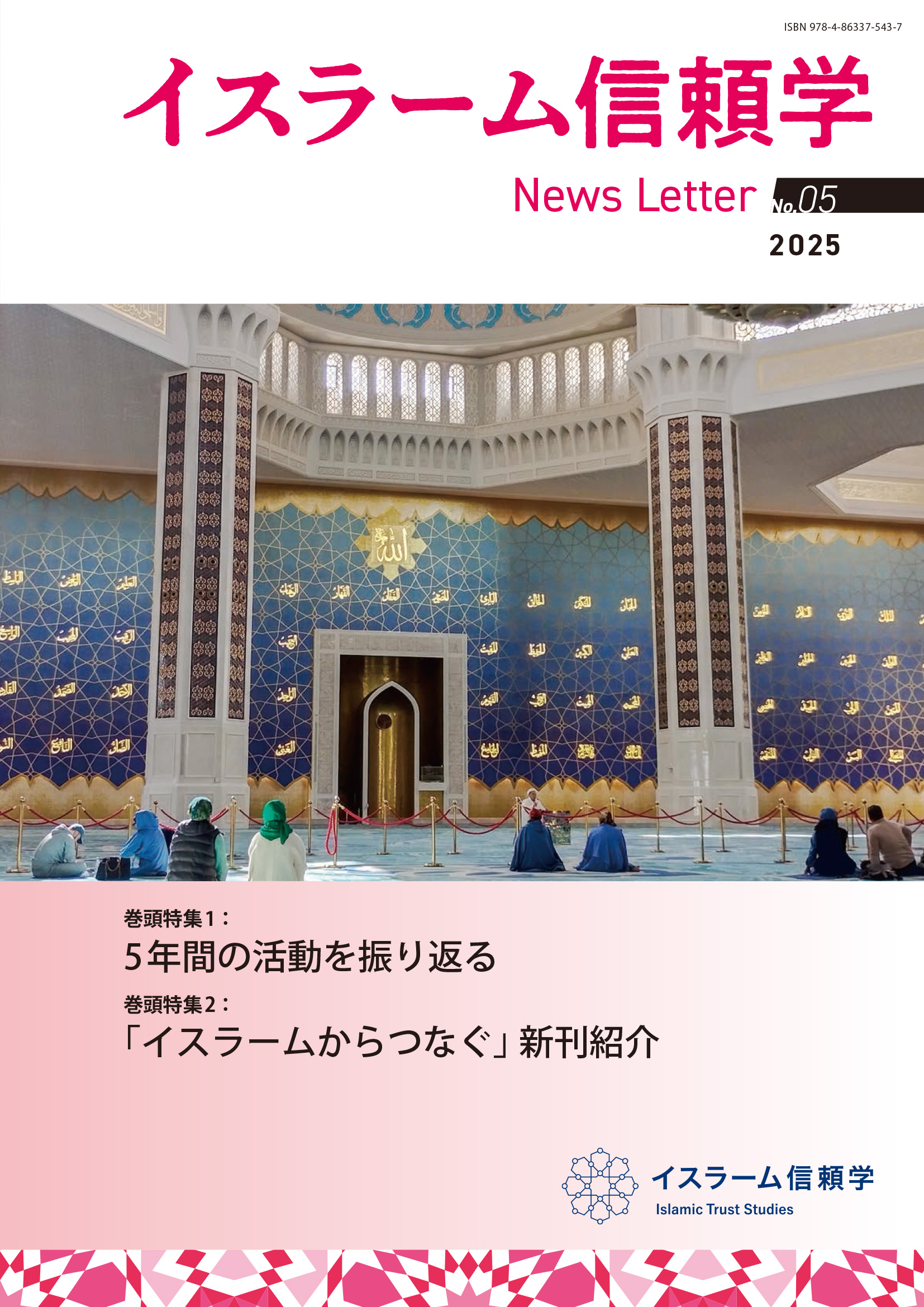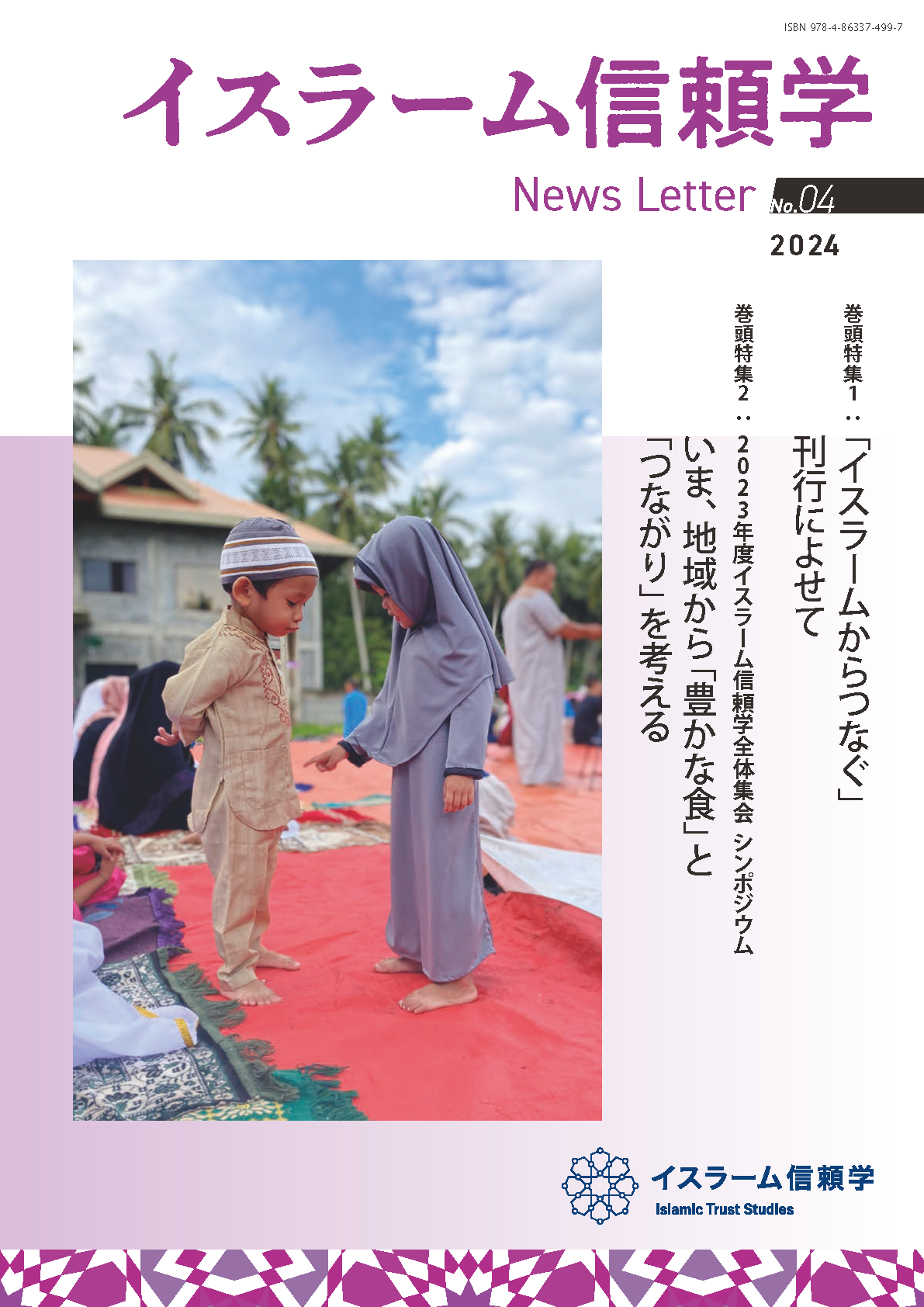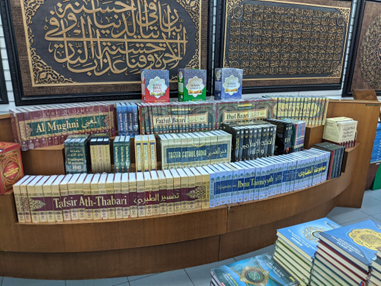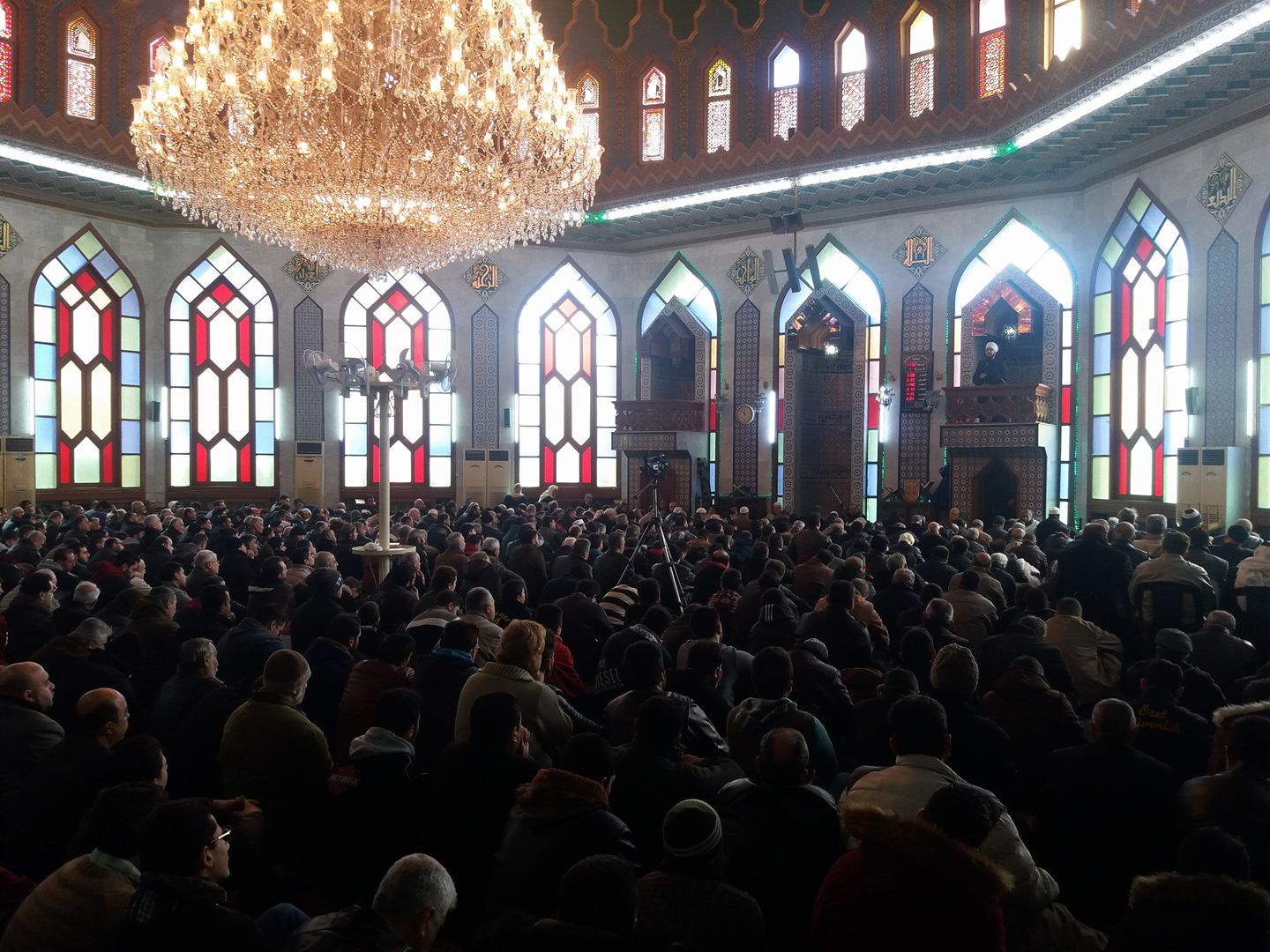Blog #11 “Special Feature: Considering the Keywords Used in the Trust Studies Project”
2023.03.30
Category: Blog
Author:
Special Feature: Considering the Keywords Used in the Trust Studies Project
(Excerpted from the online roundtable discussion: “From Islamic Urbanism to Islamic Trust Studies”. Originally in Japanese)
On October 9, 2021, the Islamic Trust Studies research project held an online roundtable discussion entitled “From Islamic Urbanism to Islamic Trust Studies”. Participants included Hiroshi Kato (Professor Emeritus, Hitotsubashi University) and Toru Miura (Professor Emeritus, Ochanomizu University), both members of the Islamic Trust Studies project evaluation committee, along with Hidemitsu Kuroki (Professor, TUFS ILCAA) as representative of the research area. All three were previously members of two Japanese research projects: Islamic Urbanism (1988-90, under the Scientific Research on Priority Areas program) and Islamic Area Studies (1997-2001, under the Creative Scientific Research program). They spoke about their experiences, achievements, and problems they encountered. But the excerpts below focus on their discussion of the terms “connectivity” and “networks” as used as keywords in the Islamic Trust Studies project.
Origins of the Islamic Trust Studies Project
Kuroki: I was trying to remember when I first started thinking about addressing these issues within the framework of trust-building and connectivity. I think it was around 2004 or 2005. We were out drinking after a seminar, and I muttered that joint research on the topic of trust might be a possibility. I was interested in research on trust and credibility even earlier than that. I started writing essays about it in the 1990s, after a long stay in Syria. I’ve written about the carpet merchants in Damascus on the Islamic Trust Studies blog before. But I’ve got another story, one from Aleppo. I was going to visit the home of a Sufi Sheikh, but he didn’t have a telephone. So, I showed up announced, and he wasn’t home at the time. Then, his wife entrusted me with their two-and-a-half-year-old child, and told the child to lead me to her husband’s office. Because of the societal conventions of keeping women apart from men, his wife and I talked through the door. She wasn’t even looking at my face.
There were recently all sorts of media reports on the 20th anniversary of September 11th 2001, when mistrust of Islam was boiling over around the world. Nowadays, from printed materials to the Internet, it’s gotten easy to manipulate information on a mass scale.
But at the same time, the general impression that Japanese people have of Islam and the Middle East has hardly changed since the 1980s. In some ways the misapprehensions are becoming even more prevalent. Thinking about the future of the world, and the responsibility that researchers have to society, I felt that something had to be done. The quality of Japanese research on the Middle East and Islamic areas has clearly been advancing. So, I thought we should carry out a major research project that collects those quality results and presents them to the public.
The Scope of the Islamic Trust Studies Project
Miura: I think the public needs which Professor Kuroki mentioned are very important. [omitted] And so, I’d like to ask how connectivity and trust studies can lead to a better understanding of Islam and Islamic regions, both for researchers and for the public. I thought it was great when, at the symposium that kicked off this project, Professor Kuroki noted that trust actually implies aspects of gambling. But there are big wagers, everyday wagers, and actions that we might not normally think of as wagers. So, I wondered what extents and situations he was referring to, and if they entail anything characteristic of Islam, the Middle East, or the Arab world.
This figure is an attempt to classify the four keywords discussed (networks, sociabilité [sociability], connectivity, and trust) into four conceptual quadrants. As a starting point, there’s the term’s positioning along the individual-collective axis. And then, there’s its positioning along the actual-ideal axis. There’s also a material-metaphysical dichotomy. In regards to establishing trust, there exist material factors, such as the physical living environment which Professor Kato emphasizes, and metaphysical factors, such as culture and mental issues, including psychology. I’d like to ask Professor Kuroki what he thinks, but not necessarily limited to this diagram.

Kuroki: This project includes comparative research, but that isn’t its main focus. The idea is to take wisdom from a variety of eras and regions and gather it together. We’re not trying to draw sharp distinctions in Islamic wisdom and crystallize them through comparisons. On the contrary, our approach is one of “it’s not just Islam”, and “yes, we have similar things here”. I’d like to use Islam as a sort of “lever” to unearth Islamic wisdom, which we can then map out academically, study thoroughly, and eventually present to the public. I don’t mean to say we’re not studying Islam, but I believe that’s where the significance lies.
Regarding connectivity, in places where connectivity relates to establishing trust, it’s a question of how those relationships are created, broken, and repaired. So, this connectivity could be paraphrased as “building relationships”. People don’t just aimlessly attempt to establish relationships. They risk something in the process, whether it’s large or small. We can appreciate the significance of building a relationship only when we know what the risks and rewards are. In this diagram, such attempts to build relationships basically start at the individual level, and gradually accumulate to reach the collective societal level. But even so, at some stage, the analysis comes down to the individual level.
Miura: Professor Kuroki’s positioning of Islam seems in accordance with the Islamic Urbanism project’s findings published in “Islamic Urban Studies” (1994), and with the Islamic Area Studies project’s findings published in “Asia in Comparative History” (2004). At the same time, I was thinking of trust as the wagers made by the individual, which, when taken together, constitute connectivity. Is it your view that there are connections between individuals, and that taken collectively, those connections constitute a single system of trust?
Kuroki: Both the individual and the collective. Whenever you establish a relationship, you are creating some kind of trust there. As those relationships accumulate, they build toward a transition, wherein that trust becomes institutionalized.
Miura: So then, when both connectivity and trust are at a group or collective level, for example, would we call that a “community”?
Kuroki: That’s quite difficult. I am embarrassed to say that I haven’t been following the various critical views on community. I recently read “Komyuniti o Saiko suru [Rethinking Community]” (Heibonsha, 2013) by Toshio Iyotani and two other authors. But, in that case, I think it’s dealing more with activities intended to create some kind of community-like entity.
Connectivity, Networks, & En(縁)
Kato: I’d like to share some of my thoughts which may be relevant to what you’ve been discussing. I’ve used the term “network” from time to time, because it evokes the principle of methodological individualism found in social sciences analysis. Here, let’s define “methodological individualism” as simply a research approach that starts with the individual and analyzes society as the extent of social relationships that the individual establishes. And, regardless of what we would or wouldn’t otherwise perceive or recognize as “a network”, we think of networks only as the actual social relationships that individuals create with one another.
Although I have often used the word “network”, from the outset I’ve had serious misgivings about the nuances of that word. If possible, I’d rather have avoided the word “network” and replaced it with another. Because the word “network” implies connections in this rather flat 2-dimensional sense based on points and lines, irrespective of their quantitative or qualitative differences. The word “network” tends to distance the complexities, diversities, and uncertainties that underlie the social relationships that individuals form, or in other words, their historicity.
I was of course interested in what kind of networks existed and what kind of societies are formed through networking. But at the same time, and more importantly, I was looking for concepts that could explain why networks exist in the first place, and why and under what circumstances do individuals enter into social relationships. In the process, 20 years ago, I came across the word “connectivity” through Professor Teruo Sekimoto’s concept of a two-way relationship, as indicated in Professor Miura’s diagram. Since then, I have been using “connectivity” more and more in place of “networks”. What connectivity means to me is the abstract relationship itself.
Just now, as we were discussing this, a word popped into my head that might express the idea better than “connectivity”. The Japanese word “en (縁) [fate / karma / serendipity / encounter / connection]”. Because the word “en” includes a sense of uncertainty not expressed by “connectivity”. You can’t analyze en. If we take “en” to be an event we’d call an “encounter”, then I think you could analyze that. But, that’s the “en” that brought about the “encounter”, not the “en” itself, which probably couldn’t be subjected to analysis. At best, we might be able to do a probabilistic analysis. But that would require knowledge – gained through experience – to determine the chance of that “encounter.
Kuroki: I appreciate what you just said, Professor Kato, about the difficulty of analyzing connectivity, or “en”. It’s just that when you say “en”, that feels passive, like it’s a given thing. If someone said, “there was no en involved”, then would we have to accept that the outcome was predetermined. Connectivity, on the other hand, conveys a sense of agency, of actively trying to establish a relationship. When we set out to create a relationship, we create opportunities, we negotiate, and we strategize when the relationship starts moving in different directions. So, it would certainly be difficult to analyze all that as data. But if a network can be analyzed, shouldn’t it be possible to draw conclusions about the nature of its connectivity by tracing out how each of its nodes is connected?
Kato: I think you’re right. But, let me just add my personal view on this point. Honestly, I felt uncomfortable listening to the heated exchange between Professors Kuroki and Miura about the social nature of academic work. Earlier, I explained how I came to use the term “connectivity” as an analytical concept. My intention with the word “connectivity” was to dispel the material nuances associated with the word “network”. In fact, when analyzing social relations, this goes hand in hand with erasing human individuality.
Professor Kuroki is one level younger than me, so it might not occur to him, but having been a student in the aftermath of the college protests of the 1970s, I was heavily influenced by the existentialism that was popular even among intellectuals at the time, especially Sartre’s ideas. To sum up Sartre’s thought, in a world governed by absurdity and chance, human beings live by making “wagers” from moment to moment. Sartre referred to this “wagering” as “engagement [commitment / projection]”. Like many others, I too was infected with this anarchic thinking.
But, as he drifted toward Marxism over time, Sartre eventually replaced his assertion that man can only exist in the form of the “projection” he makes of himself with the assertion that, unless one exists in the form of such a “projection”, one is not a man. My enthusiasm for existentialism quickly faded after that. Because I became fed up with the over-emphasis on human subjectivity. Thus, I was also drawn in by the subject-less structuralistic thought that followed existentialism.
I don’t mean to say that we must kill the subject in order to analyze society. There’s no doubt that the social relationships we see are manifested by the individual. But, if we use the word “network” to describe these visible social relationships, then I fear that the randomness of these “encounters”, or I would say the fertility of these “encounters”, will be diminished, leaving us able to analyze them only in a flat manner.
Kuroki: Professor Kato is speaking as a member of the college protests generation. Indeed, I found myself nodding my head in agreement at your mentions of existentialism and structuralism.
Miura: When I was studying urbanism, I used the arguments of a researcher named Ira Lapidus. He described the model of society as a whole as taking on the form of a network. So, I put “networks” as used by myself and Lapidus in the bottom right quadrant. To the contrary, Professor Kato said that my use of the term “networks” is inappropriate. What Kato wants to discuss with the word “networks” is the reality of personal relationships that emphasize the individual. So, I placed “networks” as used by Kato in the upper left quadrant. Professor Kato said that he wanted to use the word “connectivity” as a broader and more universal concept than “networks”. So, I placed Kato’s “connectivity” in the upper right quadrant. To me, the word “en” that you just presented seems to refer to individual, material relationships. Could you explain a little more about the differences between “en”, connectivity, and networks?
Kato: Criticizing you was a youthful indiscretion on my part. We were both young. What was behind my criticism was that, at that time, Professor Miura was working to clarify characteristics of Islamic society using “networks” as his analytical framing device. As for myself, on the other hand, as I mentioned earlier, I was looking for a concept other than networks to analyze social relations. So, we were moving in completely opposite directions. My answer to Professor Miura’s current question is as follows.
How did individuals A and B come together through en (connectivity)? It’s probably impossible to assess that. For example, even if two people were destined to get married from the moment they were born, that relationship is due to the en of their parents, which in turn is due to the en of their grandparents. So, behind each en is an accumulated history that transcends the individual. “En” means the highly uncertain opportunities that bring about social relationships. But, I do think the probability that A and B will become connected can likely be determined through network analysis. Doing so would require the use of network visualizations to thoroughly examine the history of all the various connections between the individuals. Islamic hadith studies might be a wonderful resource in this regard. I’ve long thought those materials would be suitable for an AI-based analysis using big data. Me personally, I’m an analog guy. I’ve given up on technology-based approaches.
On Analyzing Trust & Connectivity
Miura: I’ve always thought that the humanities are essentially concerned with the individual. The social sciences, as the name suggests, are concerned with groups and societies. In such case, the positioning of the individual within social sciences is as a generic universal human being. In the extreme, it’s an abstract entity without distinguishing attributes. Within that context, a couple trends have emerged over the past 20 years or so. One is comparative institutional analysis. [omitted] The other is digital humanities, wherein computers process hundreds, thousands, a myriad pieces of data about individuals. With that data, we can apply statistical and mathematical methods to create models. That’s Digital Humanities, a growing field within data science. I think it has enormous potential. But, sometimes the attributes of the individuals involved are made abstract. [omitted] Professors Kuroki and Kato, how do you feel about using individuals’ data as a way to arrive at the structure of the networks they constitute?
Kato: That’s a very big question. I can’t answer it in such a short amount of time. But, I can try to string together some of the words that come to mind in this moment. First of all, I just want to say that I have never sought “universality” in anything, be it material or conceptual. In other words, I’m agnostic. I believe that events occur, but not that our perception of those events reflects their true nature. Just like the parable of the blind men touching an elephant. So, for me, methodology is inextricably intertwined with epistemology. In other words, I’m a methodological opportunist. I’m open to any topic of study, data, method of analysis, or whatever, as long as the framing concept and supporting data are clearly delineated in advance.
Thus, I’ve spent the majority of my research time so far, in a broad sense, examining the data, examining the perspectives under which the data and information were gathered, and looking for possible biases in how they were gathered. For me, I’ve found it most appropriate to take a methodological individualism stance, and to collect micro-level data and information compatible with that. But, it’s not enough to blindly collect a large amount of micro-data and information. There is what’s called the “fallacy of composition”. In terms of economics, this means even if the micro-level data is correct, when synthesized into macro-level aggregate values, it can cause unintended consequences. I find this contradiction between micro-analysis and macro-analysis interesting. Be that as it may, if you analyze haphazardly-collected micro-level data and information without investigating the history of those materials, including statistical computations, I think you’ll end up having simply taken a stab at it.
To go beyond merely making an attempt, I think, at the stage where you’re examining the materials, there probably needs to be some type of sorting and categorizing of data and information, also in order to speed up the analysis. As information technology improves, artificial intelligence may become able to do this sorting and categorization by itself. But then, what becomes of the researcher’s own “individuality”? Wait. Wasn’t I just a little while ago calling for the elimination of the “individual”? Apparently, I’ve lost track of what I was talking about. In any case, what I wanted to say here is that the social modeling that Professor Miura is aiming for could give us working guidelines for selecting and categorizing data and information. Miura described it as “using individuals’ data as a way to arrive at the structure of the networks”. If you ask me, this isn’t a matter of process. I think, in order to understand society as a bundle of networks, it’s an issue of how to coordinate the refining of “networks” as an analytical concept with the individualized analysis of networks. Attempting to know society as a whole is like Tyltyl and Mytyl going out to chase down the blue bird of happiness.
Kuroki: This project doesn’t reject the approach of starting from connectivity analysis to reexamine network theory and build a new model. Of course, if we could get results like that, they would be most welcome. This project isn’t limited in that way. The translated subtitle of this project’s official Japanese name says “creating strategic knowledge to overcome global divisions”. This might sound a tad over-the-top, but I believe there are endless hints toward that “strategic knowledge” in the instances where people, of both past and present, form dynamic relationships. Our goal is to harvest that information, refine it, and then present it for close examination by a wider audience. To that end, I want this project to pro-actively combine traditional methods of research using written materials and field surveys with new Digital Humanities methods to the fullest extent possible. I hope that these methods will result in models that take full account of the singularity of the individual and are fully suitable for comparisons and other uses.
Thank you both very much for your many valuable insights today.
Photos of the participants in the round-table discussion
A: Hiroshi Kato, B: Toru Miura, C: Hidemitsu Kuroki (Area Organizer), and others involved in the Islamic Trust Studies project.





